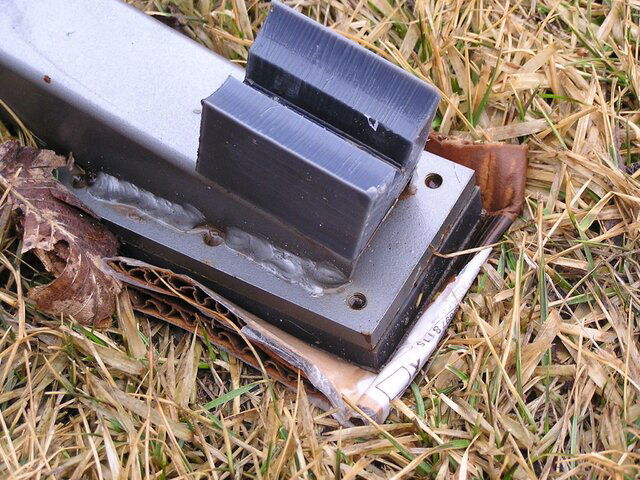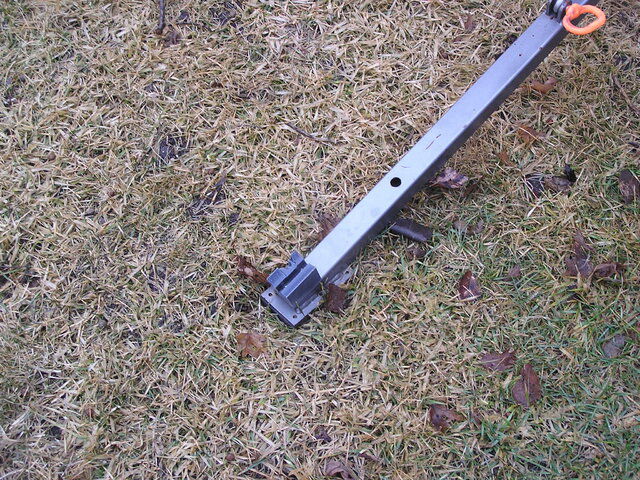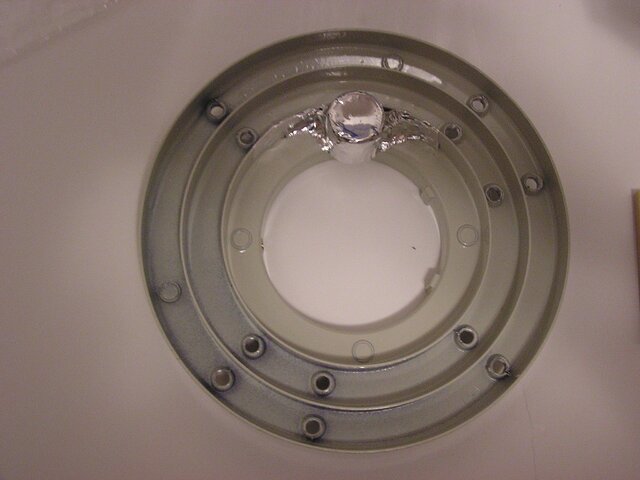I fought the cold, snow and wind all winter with Cband testing on my 1.2 meter dish. And now that the weather is finally starting to warm up I am fighting the freeze/thaw cycle and mushy ground from all the rain we have been having. The past few days I was out to the dish several times to re-plumb the mast on my portable testing tripod as the feet of the tripod heave and sink in the soil. It seems to lean one way and then the other different times during the day. It's a real pain to go out and twist the turnbuckles on the tripod to re-align the dish every six hours  . The only ease to the operation is the bulls-eye levels that are attached to the top and bottom of the mast for quick reference.
. The only ease to the operation is the bulls-eye levels that are attached to the top and bottom of the mast for quick reference.
Last night I started testing certain transponders for signal levels when I noticed them changing dramatically in just half an hour. It has been raining nonstop here all day and overnight. This morning I went out to the dish and found it leaning about 5 degrees forward. My handy collapsible and portable testing tripod is great, but I think I made the 2x4 inch foot pads to small. The mounting of the dish has the bulk of the weight to the front of the tripod, and the pad extending underneath the dish is sinking in the mudding soil. I guess the frost isn't all the way out! Thank God for a piece of folded cardboard, doubled it up and placed it under the foot. I have to decide on a permanent dish location this Spring and keep the tripod just for testing.
Thought I would share, Spring is on its way YA HOO!!!
Oh one more thing, my home is less than two miles from the Platte River. Ice jams have forced the river out of its banks overnight. Hope it doesn't overflow the dike !
!
Last night I started testing certain transponders for signal levels when I noticed them changing dramatically in just half an hour. It has been raining nonstop here all day and overnight. This morning I went out to the dish and found it leaning about 5 degrees forward. My handy collapsible and portable testing tripod is great, but I think I made the 2x4 inch foot pads to small. The mounting of the dish has the bulk of the weight to the front of the tripod, and the pad extending underneath the dish is sinking in the mudding soil. I guess the frost isn't all the way out! Thank God for a piece of folded cardboard, doubled it up and placed it under the foot. I have to decide on a permanent dish location this Spring and keep the tripod just for testing.
Thought I would share, Spring is on its way YA HOO!!!
Oh one more thing, my home is less than two miles from the Platte River. Ice jams have forced the river out of its banks overnight. Hope it doesn't overflow the dike









